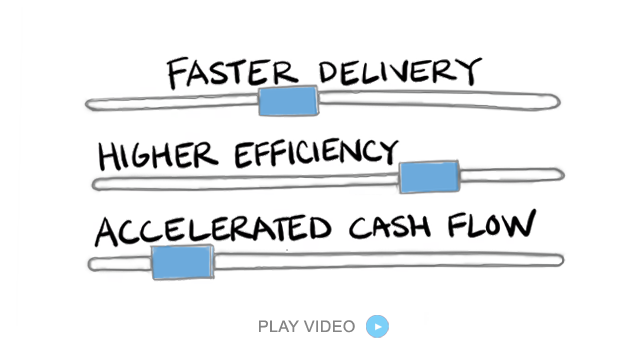10 Strategies for Coordinating Production and Distribution Schedules in Packaging Manufacturing
Purchasing Managers play a pivotal role in ensuring smooth operations. As market demands fluctuate and production complexity increases, coordinating production and distribution schedules has become a critical challenge. Seamlessly aligning these schedules ensures the timely delivery of goods, minimizes waste, and optimizes resources.
This blog explores 10 key strategies for coordinating production and distribution schedules, with a particular focus on leveraging advanced technologies like PlanetTogether integrated with ERP systems such as SAP, Oracle, Microsoft Dynamics, Kinaxis, or Aveva.

The Coordination Challenge
The packaging industry operates on tight deadlines, often requiring just-in-time (JIT) manufacturing to meet customer expectations. A misalignment between production and distribution schedules can lead to:
Overstock or stockouts.
Increased lead times.
Wasted materials and resources.
Reduced customer satisfaction.
To address these challenges, integrating production planning with distribution management is vital. Here’s how it can be done effectively.
1. Establish Clear Communication Channels
Effective coordination begins with clear communication between production, procurement, and logistics teams. As a Purchasing Manager, fostering cross-departmental collaboration ensures everyone is aligned on:
Production priorities.
Inventory levels.
Delivery timelines.
Technology Insight: Integration between PlanetTogether and ERP systems like SAP or Microsoft Dynamics centralizes information, enabling real-time updates across teams. This eliminates silos and ensures that purchasing decisions are aligned with actual production and distribution needs.
2. Leverage Data-Driven Insights
Modern manufacturing generates vast amounts of data, from material availability to production cycle times. Harnessing this data can drive better decision-making and improve schedule coordination.
Key Metrics to Track:
Lead times for raw material procurement.
Machine utilization rates.
Distribution transit times.
Technology Insight: By integrating PlanetTogether with systems like Oracle or Kinaxis, you can analyze historical and real-time data to predict bottlenecks and optimize schedules. For example, if a delay in material delivery is identified, production schedules can be adjusted proactively, ensuring minimal disruption.
3. Implement Advanced Planning and Scheduling (APS) Systems
Advanced Planning and Scheduling (APS) tools, such as PlanetTogether, are specifically designed to optimize production and distribution schedules. These systems provide:
Scenario modeling: Simulate different scheduling scenarios to choose the most efficient option.
Constraint-based planning: Account for resource limitations like machine capacity and material availability.
Real-time adjustments: Adapt schedules dynamically based on unforeseen changes, such as last-minute order modifications or supply chain disruptions.
Case in Point: A packaging manufacturer using PlanetTogether integrated with Aveva saw a 20% improvement in on-time delivery rates by dynamically adjusting production schedules based on distribution constraints.
4. Align Inventory Strategies with Production Goals
Inventory plays a bridging role between production and distribution. Striking the right balance ensures that neither overproduction nor stock shortages hinder operations.
Best Practices:
Implement Just-in-Time (JIT) inventory for high-turnover items.
Maintain safety stock for critical materials.
Regularly review inventory turnover rates.
Technology Insight: Integration between PlanetTogether and SAP allows Purchasing Managers to monitor inventory levels in real-time. This ensures that raw materials are ordered precisely when needed and finished goods are ready for shipment without delays.
5. Optimize Distribution Planning
Distribution planning should align with production schedules to avoid delays and additional costs. Key elements of effective distribution planning include:
Route optimization to reduce transit times.
Collaborative planning with logistics providers.
Continuous monitoring of delivery performance.
Technology Insight: By integrating PlanetTogether with Kinaxis, manufacturers can synchronize production schedules with distribution routes. For instance, as production output is updated in PlanetTogether, Kinaxis adjusts delivery schedules accordingly, ensuring a seamless flow from the factory to the customer.
6. Invest in Predictive Analytics
Predictive analytics helps anticipate potential disruptions and allows for preemptive action. In the packaging industry, these disruptions might include:
Supply chain delays.
Equipment breakdowns.
Sudden demand spikes.
Technology Insight: PlanetTogether, when connected to advanced ERP systems like Oracle or Microsoft Dynamics, leverages predictive analytics to forecast potential delays. This empowers Purchasing Managers to adjust schedules proactively, minimizing downtime and maintaining customer satisfaction.
7. Foster Vendor Collaboration
Strong relationships with suppliers are essential for maintaining a reliable flow of raw materials. Collaborative scheduling with vendors ensures that materials arrive on time, in the right quantities.
Best Practices:
Share production forecasts with suppliers.
Use automated replenishment systems for critical materials.
Establish performance metrics for vendor reliability.
Technology Insight: Integration between PlanetTogether and SAP allows for automated vendor communication, ensuring that purchase orders are aligned with production schedules. For example, if production schedules shift, SAP automatically updates vendors, reducing the risk of overordering or delays.
8. Embrace Sustainability in Scheduling
Sustainability is becoming a priority for packaging manufacturers. Coordinating production and distribution schedules to reduce waste and carbon emissions aligns with corporate social responsibility goals.
Key Strategies:
Optimize production runs to minimize energy consumption.
Consolidate shipments to reduce transportation emissions.
Reuse or recycle materials wherever possible.
Technology Insight: Integration of PlanetTogether with Aveva enables manufacturers to track sustainability metrics. By analyzing these metrics, Purchasing Managers can make informed decisions that balance efficiency with environmental responsibility.
9. Train and Empower Your Team
Even the best technology is ineffective without skilled personnel. Training teams to use integrated planning tools ensures they can leverage these systems to their full potential.
Focus Areas:
Interpreting data from APS and ERP systems.
Using scenario modeling for decision-making.
Responding to real-time alerts and adjustments.
10. Monitor and Refine Processes
Continuous improvement is key to maintaining efficiency. Regularly reviewing performance metrics and refining scheduling processes ensures long-term success.
Metrics to Review:
On-time delivery rates.
Inventory turnover.
Production cycle efficiency.
Technology Insight: With PlanetTogether integrated with Oracle or SAP, Purchasing Managers can generate detailed reports on scheduling performance. These insights help identify areas for improvement and implement corrective actions.
As packaging manufacturing becomes increasingly complex, integrating production and distribution schedules is no longer optional. Tools like PlanetTogether, when integrated with robust ERP systems, offer a unified platform for seamless coordination. For Purchasing Managers, this means fewer disruptions, better resource utilization, and enhanced customer satisfaction.
By adopting the strategies outlined in this blog, packaging manufacturers can stay ahead of the curve, meeting market demands efficiently while optimizing costs and reducing waste. It’s time to embrace technology and take scheduling coordination to the next level.
Are you ready to take your manufacturing operations to the next level? Contact us today to learn more about how PlanetTogether can help you achieve your goals and drive success in your industry.
Topics: PlanetTogether Software, Integrating PlanetTogether, Reduced Waste, Packaging Manufacturing, Optimize Costs, Establish Clear Communication Channels, Leverage Data-Driven Insights, Optimize Distribution Planning





















LEAVE A COMMENT